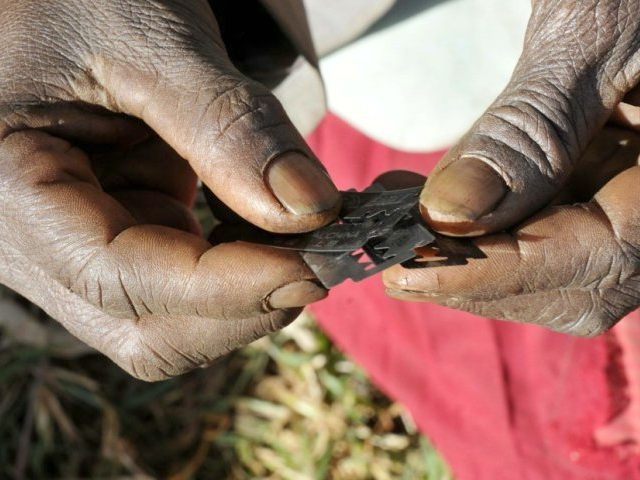The United Nations is renewing its push to eradicate the practice of female genital mutilation (FGM) from the only community in Latin America known to practice it: the Emberá tribe, native to western Colombia.
The centuries-old practice is treated so secretively among women of the Emberá tribe that the men of the tribe did not know it was going on, and many women who suffered mutilation did not know they had been victims until first giving birth to a girl, and watching a midwife perform the mutilation on their daughters. The tribe does not allow men to witness childbirth, leaving them in the dark on the practice.
“Before 2007, we didn’t even know FGM was happening in our communities,” Alberto Wuazorna, an Embera leader and chief advisor at the National Indigenous Organisation of Colombia (ONIC), told Reuters this week. That year, a doctor in remote Colombia reported the death of a newborn girl that had arrived at his hospital, noting that the girl did not have her clitoris and appeared to die of complications arising from FGM. Lucy Wartenberg, UNFPA’s Colombia assistant representative, described FGM to Reuters as “still a secretive practice that’s decided between the mother of the newborn child and the midwife.” This means many men are not privy to the practice and do not know that their wives and daughters have suffered through it.
FGM involves the removal of some or all of the external genitalia on a woman. It often results in severe infections and complications during childbirth later in the victim’s life. The practice also ensures the woman will not be able to enjoy sexual activity, often rendering it painful.
The 2007 scandal has resulted in years of reflection for the Emberá tribe. A report on FGM in the region from that year notes that the tribe considered the ritual “sacred” and that the ONIC, contrary to Wauzorna’s more positive attitudes towards eradicating the practice, was initially hesitant. “The ONIC has manifested itself in defense of the practice,” the report reads, “arguing that ‘it is about conduct relevant to an ancestral practice of the Emberá Chami people, within their world outlook.'” Banning it, the group insisted, would be a violation of the sovereignty of the Emberá tribe.
At least one anthropologist studying the group has suggested, however, that the practice is not native to South America, but to Africa. Víctor Zuluaga, a historian at the Pereira University of Technology in Colombia, claims evidence points to slaves imported by the Spanish from Mali as the first to teach the Emberá tribe to remove parts of a female infant’s genitalia. Zuluaga suggests that, in Mali, these slaves “were used to the men spending much time away from home,” and used FGM as a guarantee that “the woman could not commit infractions such as infidelity.” The clitoris, he adds, was considered “the center of evil … some Christian sects refer to it as Hell’s doorbell.” Neither the Malian slave populations nor the Emberás were Christian groups during their exchanges.
Spaniards used both indigenous people and African slaves for labor. The groups would interact during breaks from working the fields.
Wazorna, the ONIC leader, told El País in May that the response from the group in 2007 was largely due to ignorance. “We didn’t know anything … it was a very difficult conflict for us as a people. We had to confront it.”
Speaking to the UN this month, Wuazorna hopes that, with renewed awareness, the Emberá tribe will cease this practice in “10 to 15 years.”
The United Nations, meanwhile, hopes to eradicate FGM globally by 2030, noting that the Emberá tribe signed an agreement to ban the procedure entirely in 2012, but childbirth remains too secretive to ensure it no longer goes on. Nonetheless, leaders of Emberá community made their voices heard at the UN’s International Day of Zero Tolerance Against Female Genital Mutilation.
The major challenge against FGM remains in North Africa and the Middle East, however, where it is practiced largely among, but not exclusively by, Muslim populations. UNICEF estimates that half of all FGM victims live in Egypt, Ethiopia, and Indonesia. In Somalia, 98 of women have been subjected to the practice; in Guinea, 97 percent of women have; and in Djibouti, the figure stands at 93 percent. 90 percent of women in Egypt are believed to have undergone FGM. At least 200 million women and girls live with the aftermath of having FGM practiced on them worldwide.
Moreover, UNICEF announced this year that the number of women and girls affected has risen. Nearly 70 million more girls and women are estimated to have suffered through FGM in 2015 than 2014. The number of cases of this practice occurring in the West has also increased, due to mass migration from areas that engage in the practice. In September, the UK found 1,036 of FGM in the three months preceding. At the beginning of this year, a U.S. Centers for Disease Control (CDC) study found that the rate of FGM in the United States had quadrupled among girls under 18 years of age.

COMMENTS
Please let us know if you're having issues with commenting.